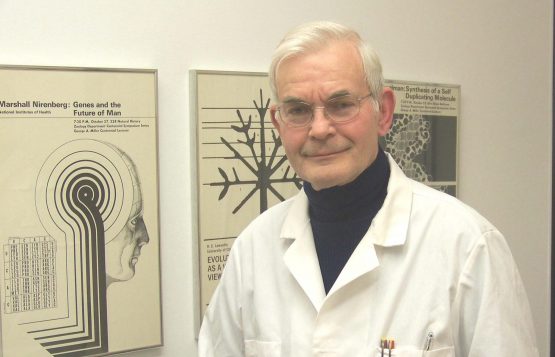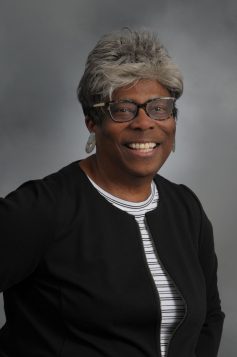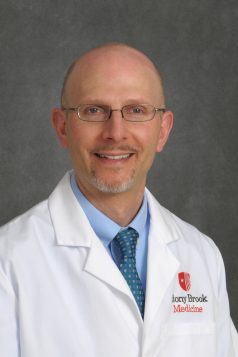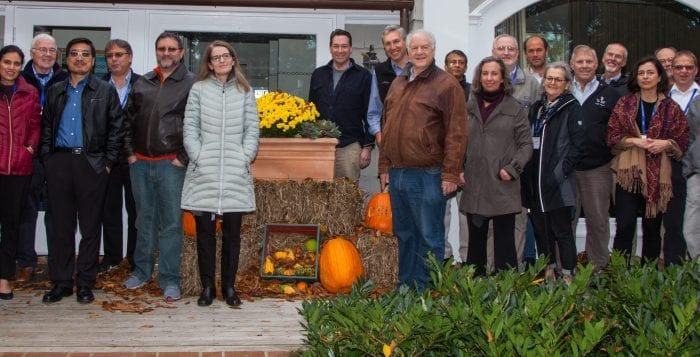By Daniel Dunaief
The American Society for Microbiology named Stony Brook University’s Department of Microbiology and Immunology a “Milestone” program on Oct. 17th, recognizing the department’s historical research contributions in fields ranging from Lyme disease to polio virus, and infection and vaccines.
Stony Brook is the 20th program to receive this distinction from the ASM, joining Cold Spring Harbor Laboratory as the second such distinguished program on Long Island, and the fourth in the state.
It’s a “shared distinction among all the friends and colleagues from the department over the years” since its inception in 1972, said Carol Carter, Distinguished Professor in the department, and recent inductee into the National Academy of Sciences.
“It’s a family-community [honor],” she continued.
The Milestone recognition from the ASM raises the profile of the department and the university, as it recognizes its historical contribution to the field, and encourages and inspires the growing staff in a department in which basic research can lead to breakthrough discoveries.
“This is not an award or discovery for the last year or year before,” said Kevin Gardner, Vice President for Research and member of the Office of the President. “This is for historical levels of achievement over a really long period of time.”
Gardner planned to join department members, politicians including Assemblymember Edward Flood (R-Port Jefferson) and executives at ASM, as part of the recognition ceremony. The ASM, which was founded in 1899, and has over 32,000 members, is a “high-quality professional society and is about as good as they get,” Gardner added.
“It’s a tremendous honor.”
Theresa Koehler, president of ASM, will give a speech on the historic microbial science accomplishments at Stony Brook and designate the site officially a Milestone program.
Professor Emeritus, Nassau Community College/ University Medical Center and ASM Member, Lorraine Findlay, will also attend.
The ASM has been recognizing Milestones in Microbiology sites since 2002, when the first such honoree, Selman Waksam’s Laboratory at Rutgers University, received the honor.
“The program celebrates groundbreaking achievements that have shaped our understanding of microbiology and inspire future generations,” ASM Archivist Colleen Puterbaugh explained in an email.
The Stony Brook Department of Microbiology and Immunology has made the kind of fundamental discoveries regarding how cells work and how DNA and RNA and the different genetic building blocks come together that have led to treatments for diseases like polio, Gardner added.
“These types of recognition really help put the word out about what we’ve done and continue to do,” said David Thanassi, Chair of the Department of Microbiology and Immunology. “It helps build morale” and aids in recruiting additional faculty.
Last year, the department added four faculty members and is in the process of searching for another person to join.
In the wake of the COVID Pandemic, universities and research facilities have emphasized the importance of microbiology, immunology and virology, which are fields that could help provide the kind of basic science that leads to early diagnosis, prevention, and treatment.
“Other places want virologists, too, because there’s a greater awareness of the need for these types of researchers,” said Thanassi.
Compelling research
In the application Carter helped prepare to submit to the ASM, she focused on three specific basic research achievements that have had an important impact on human health.
Joseph Kates, Founding Chair of the department, discovered that viruses could package enzymes required to copy themselves. His research made it possible to target viral polymerases as a type of therapy.
“Up to that point, it really wasn’t known about the basics of how viruses replicate themselves,” said Carter. “Finding this enzyme that viruses have to carry in their coat meant humans could devise a strategy for countering their ability to replicate.”
When she was considering joining the young state university, Carter interviewed with Kates in 1975. Kates “was so impressive and so much fun,” said Carter, “it was difficult to envision why you wouldn’t come and work in his department.”
Additionally, the ASM considered the research of Jorge Benach, Willy Burgdorfer and scientists from the Rocky Mountain Laboratory, who identified the cause of Lyme disease, which is a particular problem on Long Island.
This work made it possible to create antibiotic therapies.
Benach was able to “isolate the spirochetes from patients and demonstrate that they were the causative agent of Lyme,” said Carter.
Benach also characterized the form of the infection that occurs in dogs. Meanwhile, Eckard Wimmer was the first to describe the chemical synthesis of a polio virus without using a natural template. He was also the co-discoverer, with Vincent Racaniello, of the human receptor for poliovirus.
Wimmer’s work started efforts to synthesize organisms in the absence of a natural template, making it possible to develop new strategies in virus vaccine development.
Two plaques
As a part of the ceremony, the ASM will award Stony Brook two plaques. One of them will be visible in the department itself, while the other will go up in the Renaissance School of Medicine’s lobby, near the dean’s office and the library.
Carter suggested that the department continues to conduct research that is globally important.
“These days, the [discoveries] are not low-hanging fruit,” Carter said.
“The answers don’t come easily. You do feel gratified, whether you or somebody else in your unit, provides some sort of understanding that we didn’t appreciate before,” she continued.
In addition to the principal investigators who conducted research that proved important for human health, Carter added that the students who gained experience and insights at the university have gone on to develop productive careers.
“We have had fabulous students.”









